

Uh oh...
It appears that you're using a severely outdated version of Safari on Windows. Many features won't work correctly, and functionality can't be guaranteed. Please try viewing this website in Edge, Mozilla, Chrome, or another modern browser. Sorry for any inconvenience this may have caused!
Read More about this safari issue.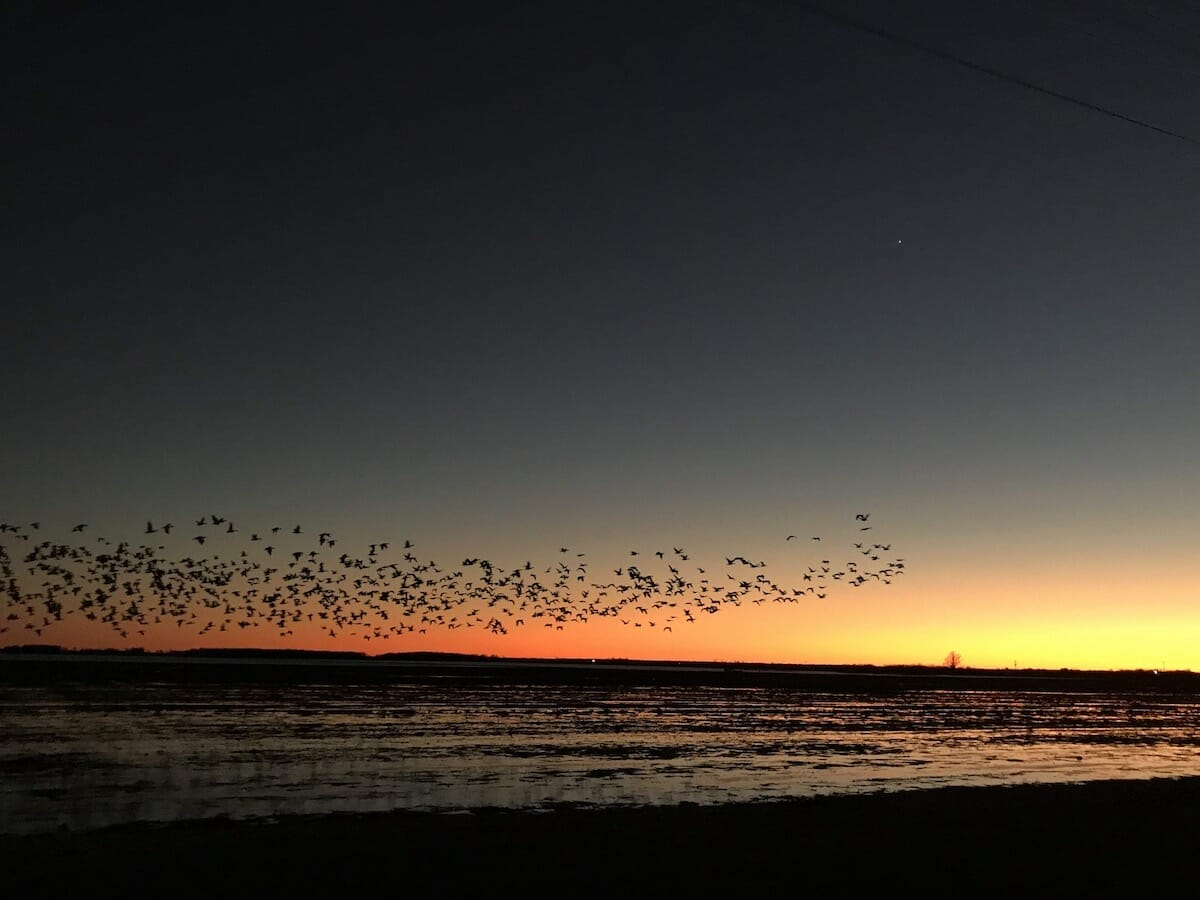

Duck season is right around the corner and has many Arkansans turning their eyes towards the skies. Waterfowlers and bird watchers can both agree that late fall and early winter is a special time in the state as millions of ducks take to our skies.
As part of the Mississippi Flyway, Arkansas is an important location for waterfowl migration. Habitat and abundant food sources attract the birds, and Arkansas often sees a buildup of ducks through February as they continue their migration back north.
Rice Farmers And Ducks
In addition to our lakes, rivers, marshes and ponds, part of the appeal of Arkansas to ducks is our waterfowl-friendly agriculture. Rice is the most important crop in Arkansas and farmers who participate in winter flooding of their harvested fields help create thousands of acres of viable habitat. Many farmers can also profit by leasing their fields to waterfowlers throughout the winter hunting seasons.

Ducks of Arkansas
There are so many different species of ducks that they are divided into categories. Most Arkansas ducks are considered dabbling ducks or diving ducks.
Dabbling ducks are typically bright in color (males) and sit high on the water. They feed by tipping forward so that their feet and tail ends are sticking up above the water.
Diving ducks are drabber in color and sit lower on the water. These ducks will dive for fish and clams, submerging their entire body. Diving ducks can dive up to 40 feet or more to pursue a food source.
Not Just Mallards
Mallards are one of the most prolific species of ducks found in Arkansas. The green heads of the males make them instantly recognizable to most people who know even a tiny bit about ducks. You may be surprised to learn that over 24 species of ducks are regularly spotted across the state. In addition to mallards, ring-necked ducks, buffleheads and scaups are common across the state. Other ducks, such as redheads and goldeneyes, are more difficult but not impossible to spot.
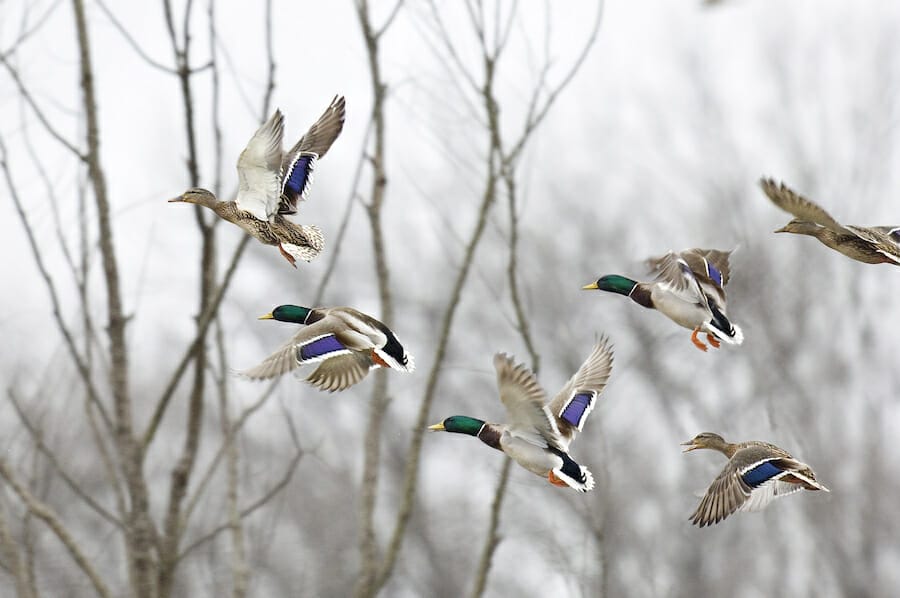
Mallards
Description – Male has an iridescent green head, white ring on neck, brown chest and gray body. The female is light brown all over.
Occurrence – Mallards are the most common duck in North America as well as Arkansas.
Wood Duck
Description – Male has an iridescent greenish crest with brown, black and white sections and bright red eyes. Females are mostly brown but have white patches around their eyes.
Occurrence – Wood ducks can be found across the state and prefer forested wetland areas.
Northern Pintail
Description – Males are easily identifiable by their reddish head, gray beak and white stipe that extend from the back of the neck to the chest. The pointed tail is also a defining characteristic of the Northern Pintail.
Occurrence – Northern Pintails are most commonly found throughout the Delta region of the state.
Green-winged Teal
Description – Males can be identified by their reddish heads with green coloring around the eye. They also have green bars on their wings and yellowish tail stripes.
Occurrence – Teals prefer shallow natural wetlands and flooded fields and occur throughout the Delta.
Bufflehead
Description – Males are primarily white with large black patches on their wings. Their colorful head has a large, bushy white crest.
Occurrence – Common on large lakes and rivers across Arkansas.
Ring-necked Duck
Description – These ducks have primarily dark bodies with grayish sides. Their primary identifier is the white ring around their gray bill.
Occurrence – These diving ducks prefer swampy areas and are common throughout the Delta.
Common Goldeneye
Description – Goldeneyes have large green heads with bright yellow-gold eyes. The males have a white spot near the base of their beaks.
Occurrence – Goldeneyes arrive late to Arkansas and stay on lakes and rivers until ice forces them further south.
Grab a pair of binoculars and explore various waterways across Arkansas for the best chance to see a variety of ducks.
We do the work.
You check your email.
Sign up for our weekly e-news.
Get stories sent straight to your inbox!






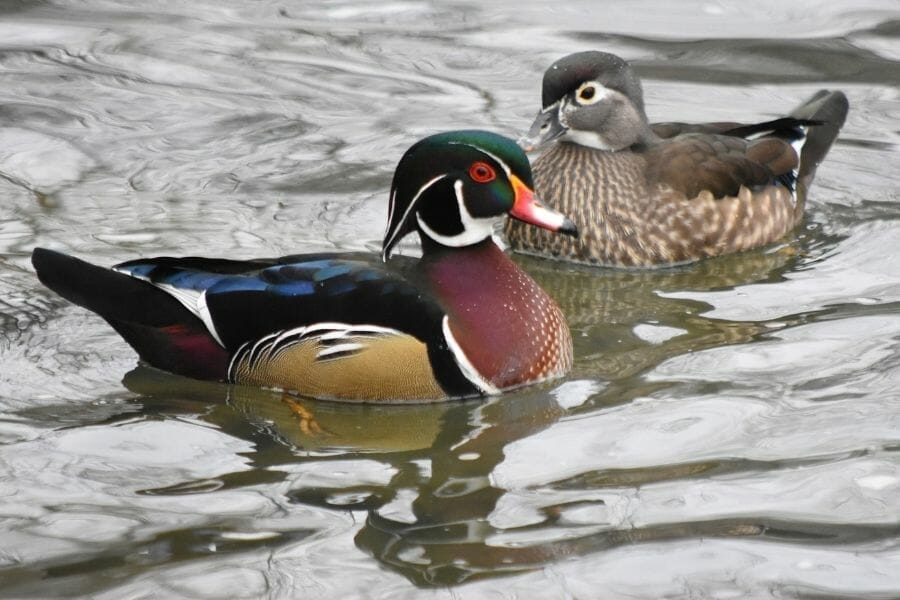
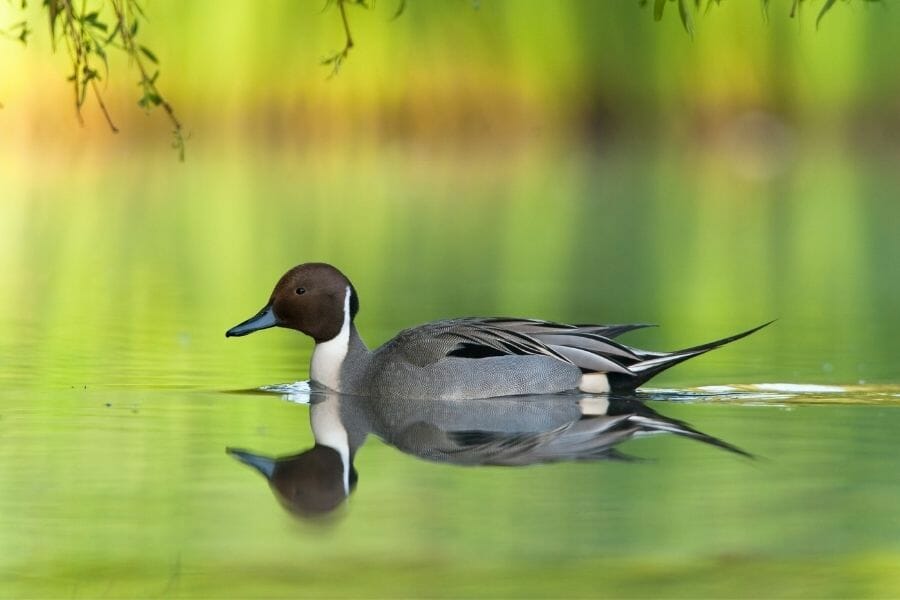
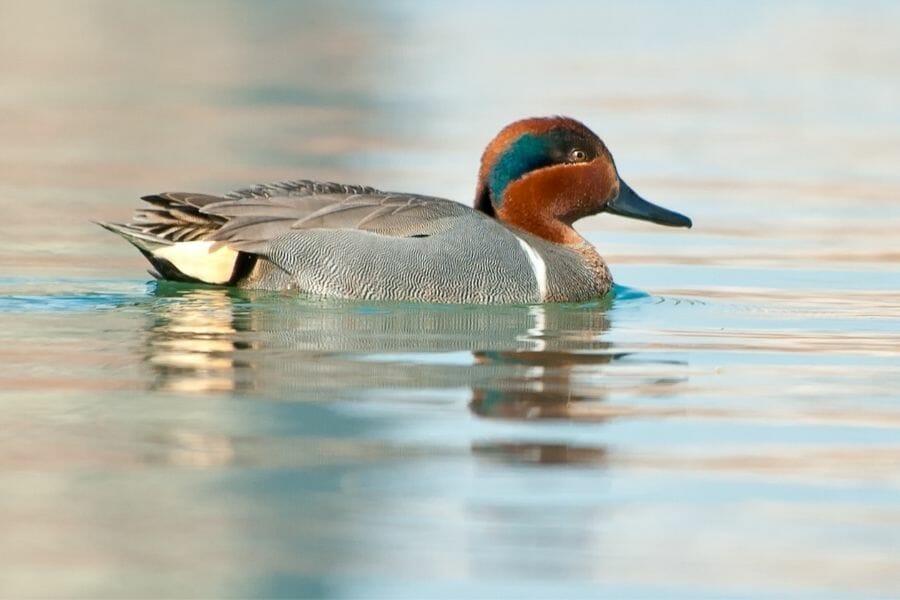
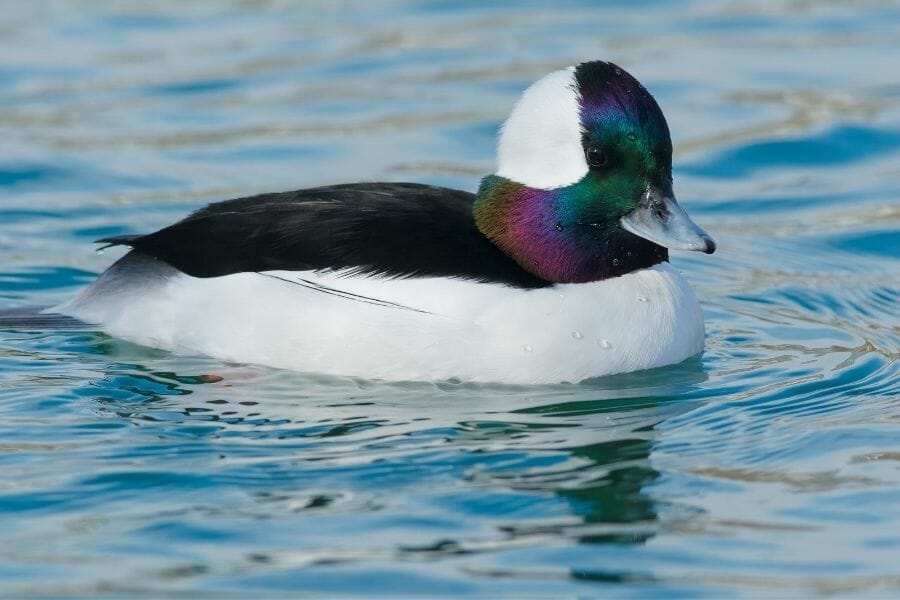

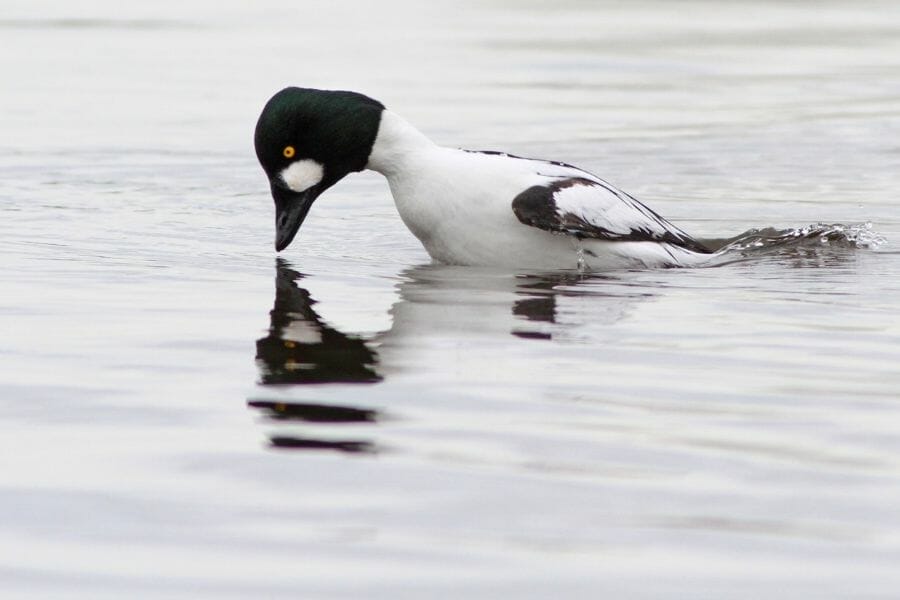






 Leave a Reply
Leave a Reply
[…] was my first time. The town, known for its duck hunting and rice production, is a little more than an hour’s drive from my home base in Little Rock. […]
[…] to blend into natural surroundings. Reliable decoys can make a hunting spot more enticing to the large variety of ducks that come to Arkasnas each winter. Many hunters also use a shotgun suited for waterfowl and appropriate non-toxic […]